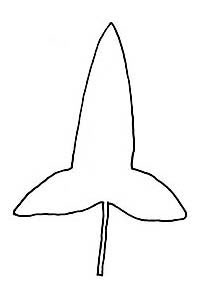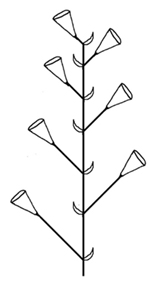Pilularia L.
pillwort, pepperweed
Marsileaceae
Eleocharis, Isolepis, Lilaeopsis, Limosella, Littorella
North America, South America, Europe, Pacific Islands in New Zealand, Australia
Pilularia globulifera L. [synonym of Calamistrum globuliferum (L.) Kuntze.]
may be naturalized in environments within their native distribution
not weedy
submergedsubmerged:
(adj) (syn. submersed) under water; submerged below the water surface
 , emergentemergent:
, emergentemergent:
(adj) (syn. emersed) with parts raised out of the water; extending up out of the water
 or seasonally inundated fern forming dense clones
or seasonally inundated fern forming dense clones
Small creeping fern, resembling a grass or sedge. Rhizomes long-creeping, slender, rooting at nodes. Leaves filiformfiliform:
(adj) thread-like; long and thin
 , tereteterete:
, tereteterete:
(adj) +/- circular in cross section
 , lacking expanded blades, glabrousglabrous:
, lacking expanded blades, glabrousglabrous:
(adj) without hairs or scales
 to sparsely pubescentpubescent:
to sparsely pubescentpubescent:
(adj) (1) covered with short, soft hairs; (2) bearing hairs
 . Sporocarps borne on short stalks at the base of leaves; globoseglobose:
. Sporocarps borne on short stalks at the base of leaves; globoseglobose:
(adj) spherical or nearly so
 , densely to sparsely hairy, less so at maturity; dehiscing into 4 valves; may be absent in permanently submergedsubmerged:
, densely to sparsely hairy, less so at maturity; dehiscing into 4 valves; may be absent in permanently submergedsubmerged:
(adj) (syn. submersed) under water; submerged below the water surface
 plants.
plants.
in shallow water of ponds, vernal pools and marshes, on lake margins with fluctuating water levels; submergedsubmerged:
(adj) (syn. submersed) under water; submerged below the water surface
 in water up to 1 m deep
in water up to 1 m deep
This genus is in need of revision and the status of the various species is unclear, with estimates ranging from one species to six. Several of the previously accepted species are currently unresolved and these species are still recognized. Calamistrum globuliferum (L.) Kuntze., the sole species within Calamistrum, was previously placed in Pilularia.